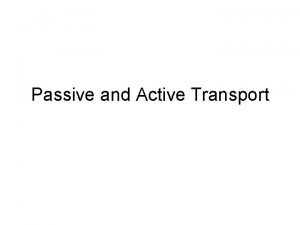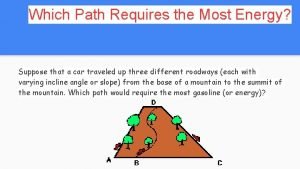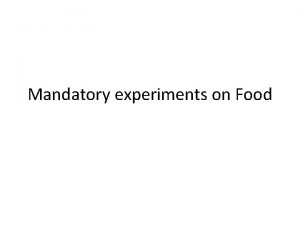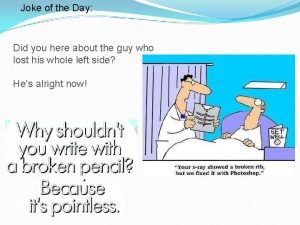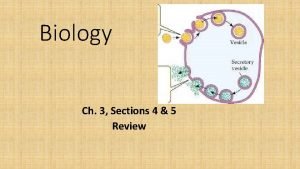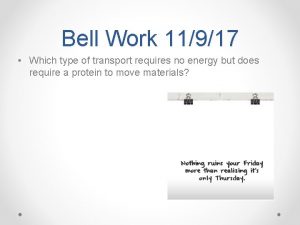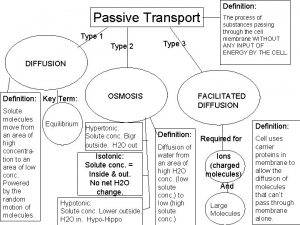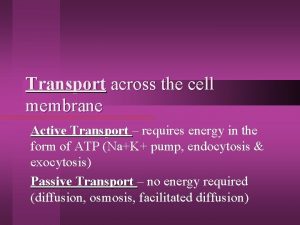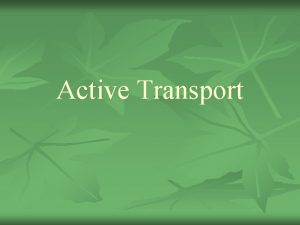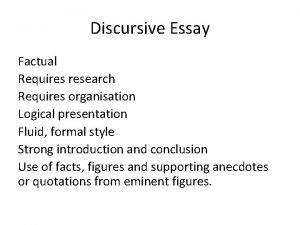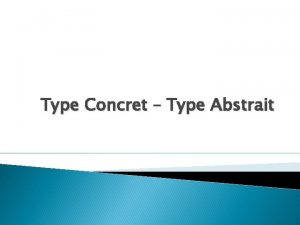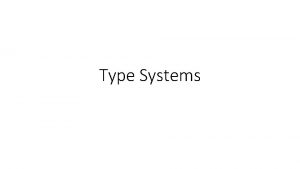Do Now 1 Which type of transport requires




























- Slides: 28

Do Now � 1. Which type of transport requires ATP? � 2. What are three types of passive transport? (you’ll find them in the article) � 3. Which way does the concentration gradient move in passive transport? (High to low or low to high) �Today’s Topic: Osmosis

Binder HW: 3. 5 Handout (Seat) Set your desk up and silently complete the DO NOW. Today’s EQ: How does the concentration of molecules on either side of a membrane affect movement? Today’s objective: we will be able to identify osmosis in order to explain the difference between hypotonic, hypertonic, and isotonic solutions

Agenda � Do Now & Review � Updated DATA � Vocabulary � INM: osmosis � EOC Practice

Let’s Look At Some DATA… � 77%

Vocabulary Word #1 � Solute write the word in your first column � When I add the solute sugar to water it dissolves in solution make a second column � Actual definition: substance that is dissolved write in your third column � Create your own sentence last column

Vocabulary Word #2 � Solvent add this to your first column � Make a predication: When I add sugar to a solvent such as water it dissolves in the solution add this to your second column � Actual Definition: a substance that dissolves another add this to your third column � Create your own sentence add this to your last column

Vocabulary Word #3 � Solution add this word to your first column � Make a prediction: when I added sugar and water together they mixed and became a solution add this to your second column � Actual Definition: is a mixture of solute and solvent add this to your third column � Create your own sentence add this to your last column

Terms to Know �Solute- substance that is dissolved. �Solvent - does the dissolving. �Solution- mixture of the solute and solvent.

Osmosis �Diffusion of water molecules �Water will flow into an area where there is less water �High to low concentration (no ATP needed)

Cell membrane semipermeable. Osmosis DILUTE SOLUTION Sugar molecule CONCENTRATED SOLUTION VERY Low conc. of water molecules. Inside cell VERY High conc. of water molecules. Outside cell 10

Osmosis Cell membrane semipermeable. OSMOSIS High conc. of water molecules. High water potential. Inside cell Low conc. of water molecules. High water potential. Outside cell 11

Osmosis Cell membrane partially permeable. OSMOSIS Inside cell Outside cell EQUILIBRIUM. Equal water concentration on each side. Equal water potential has been reached. There is no net movement of water 12

Practice 72% Water and 28% solute 72% Water 28% Solute

Practice 15% Water and 85% solute 40% Water 60% Solute

Types of Solutions � Water moves into or out of a cell depending on the type of solution � Three possible solutions: Hypotonic, Hypertonic, and Isotonic

Prefixes �Hypo: low �Hyper: �Iso: high equal

Hypotonic Solutions �Low water concentration (high solute) inside the cell �High water concentration (low solute) outside the cell �Water flows into cell �Causes burst the cell to swell or

Cells in Hypotonic solution

Hypertonic Solutions �High water concentration (low solute) inside the cell �Low water concentration (high solute) outside the cell �Water flows out of cell �Causes cell to shrink

Cells in Hypertonic solution

Isotonic Solutions �Same water & solute concentration inside & outside of cell �No net water flow �Cell size does not change in

Cells in Isotonic solution

Practice SOLUTION: 75% water, 25% solute 50% water 50% solute Hypotonic Cell will swell

Practice SOLUTION: 20% water, 80% solute 60% water 40% solute Hypertonic cell will shrink

Practice SOLUTION: 34% water, 66% solute 34% water 66% solute Isotonic cell stays the same

• : Molecules and ions are constantly being moved across the cell membranes. A student was asked to determine if the illustration shows active or passive transport of potassium (K+) and sodium (Na+).

� The cell membrane regulates the movement of molecules in and out of the cell. Which best describes the cellular environment that initiates the passive transport of molecules across a cell membrane? a. A concentration gradient across the cell membrane b. A concentration gradient that is equal on both sides of the cell membrane c. The availability of ATP to move molecules against the concentration gradient d. The availability of proteins to direct the movement of molecules against the concentration gradient �

�A cell is placed in a beaker containing pure water. Which statement best explains the changes that will be seen in the cell? a. The cell will increase in volume as water enters the cell b. The cell will decrease in volume as water leaves the cell c. The cell will decrease in volume as water and salt leave the cell d. The cell will increase in volume as water and salt enter the cell �
 Unlike passive transport active transport requires
Unlike passive transport active transport requires Active transport
Active transport Now i see it now you don't
Now i see it now you don't Antiporter
Antiporter Primary active transport and secondary active transport
Primary active transport and secondary active transport Now answer the questions
Now answer the questions Active vs passive transport venn diagram
Active vs passive transport venn diagram Primary active transport vs secondary active transport
Primary active transport vs secondary active transport Bioflix activity membrane transport active transport
Bioflix activity membrane transport active transport Active transport and passive transport
Active transport and passive transport Bioflix activity membrane transport diffusion
Bioflix activity membrane transport diffusion Which path requires the most energy
Which path requires the most energy This method is used for carrying victims moderate distance
This method is used for carrying victims moderate distance Automated build process
Automated build process Food test colour changes
Food test colour changes Write about your favorite means of transport
Write about your favorite means of transport Name a type of transport
Name a type of transport Which way now
Which way now Which way now
Which way now Which way now
Which way now Which way now
Which way now Which way now
Which way now Which way now
Which way now Theories of adulthood
Theories of adulthood Ribosomes in an animal cell
Ribosomes in an animal cell Which phrase best describes passive transport
Which phrase best describes passive transport Code of ethics three major sections
Code of ethics three major sections Code of ethics three major sections
Code of ethics three major sections What is the
What is the

